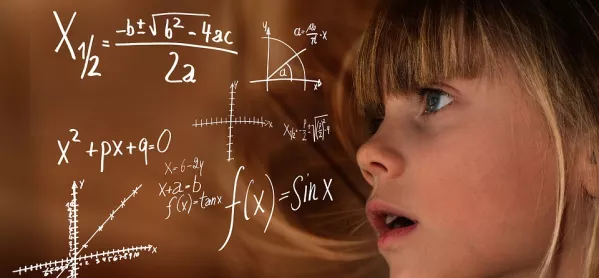- Home
- ‘We are wasting the huge potential girls have in STEM careers’
‘We are wasting the huge potential girls have in STEM careers’

When I was studying engineering at university, I was one of seven women in a class of 120. In the intervening years, as women have entered the professions, business and politics in ever-increasing numbers, it would have been reasonable to expect engineering to undergo a similar transformation. But it hasn’t.
Barely 16 per cent of engineering and technology undergraduates were women last year. Only 9 per cent of the engineering workforce in the UK is female - the lowest proportion in Europe.
The picture is equally bleak in the rest of the sciences outside medicine. Women only make up 14 per cent of the workforce in science, technology, engineering and maths (STEM), and only 11.5 per cent of management.
The problem doesn’t lie in the number of girls taking STEM subjects at GCSE - as many girls as boys study maths and the sciences and on average they achieve slightly higher grades. Yet when it comes to A levels, significantly fewer girls than boys choose to study maths, further maths and physics in particular. Only 20 per cent of students studying A-level physics are girls, a proportion that hasn’t changed in 20 years.
No-one seriously thinks that aptitude is the issue. The problem, we are told, is cultural. Various studies claim that girls lack confidence or role models post-16, or they think that science is “uncool” and “nerdy” and not sufficiently about people, which also conveniently explains why they find medicine attractive.
Unearthing talent is key
Any measures that address this cultural imbalance are worthwhile. But are we looking at the problem in the right way? Would it make more sense to focus less on cultural factors post-16 and more on the way we identify and develop scientific ability pre-16? Perhaps the best way of tackling a gender deficit at the end of school is to accept how much better we could be at recognising the scientific potential in both sexes at an earlier age.
If scientific ability were identified sooner, might more students, and many more girls, opt for a STEM career later in life?
Our education system is heavily biased towards verbal skills. The curriculum and testing regimes place a premium on the ability to grasp word and number sequences, on oracy and literacy. It is not very good at identifying and developing spatial learners, who tend to think initially in images before converting them into words. Differences in spatial ability by gender are insignificant and, in any case, tell us nothing about individual performance.
There is, however, a significant correlation between high spatial skills and scientific and engineering ability, according to Project Talent, a 50-year US study of more than 400,000 students. Children who are both highly gifted spatially and verbally tend to do well across the board. But our analysis of GCSE scores in the UK suggests that those who have high spatial but poor verbal reasoning scores markedly underperform*.
What is particularly striking is that the gap in exam performance is not confined to English or the humanities. There is also a significant, if less pronounced, divergence in maths and science. In last year’s maths GCSE, for instance, 89 per cent of children with good spatial and verbal abilities achieved an A*-B. Conversely, only 52 per cent of those with high spatial intelligence but poor verbal reasoning skills achieved the same, a 37 percentage-point difference. In physics GCSE, 86 per cent of children with good spatial and verbal abilities achieved an A*-B, compared with 58 per cent of their verbally-challenged peers. In chemistry and biology, the gaps in performance are similar.
Prodigies can plug the gaps
This represents a huge waste of potential. Almost 4 per cent of students in the UK can be classified as having high spatial but poor verbal abilities - approximately 400,000 children across primary and secondary schools. There is no intrinsic reason why these children shouldn’t perform well if their spatial ability is accurately identified and their verbal challenges addressed.
The annual shortfall of STEM skills in the UK workforce is, according to the Campaign for Science and Engineering, 40,000. If we could unlock spatial learners’ scientific potential at an earlier age and engage their incredible talent, perhaps we would have more success persuading girls to stick with science beyond 16. And if we could do that, imagine how much smaller that figure could be.
*The analysis was based on modeling a pool of more than 20,000 secondary school students who completed the Cognitive Abilities Test CAT4 in Years 7 to 9 and GCSEs in 2016.
Sarah Haythornthwaite was a lecturer in engineering at the University of the West of England. She is now director at GL Assessment.
Want to keep up with the latest education news and opinion? Follow Tes on Twitter and like Tes on Facebook.
Keep reading for just £1 per month
You've reached your limit of free articles this month. Subscribe for £1 per month for three months and get:
- Unlimited access to all Tes magazine content
- Exclusive subscriber-only stories
- Award-winning email newsletters